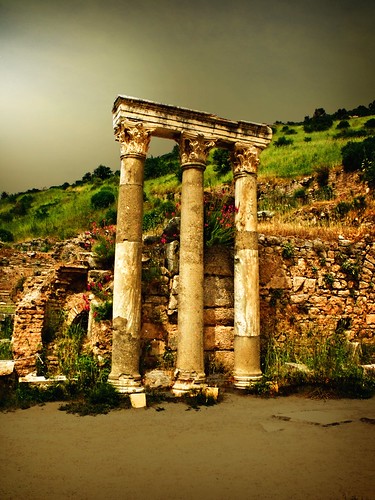
Image : http://www.flickr.com
From the very first time man decided to build a structure other than a private hut for his own dwelling place, there has been a need for someone to design and oversee its construction. Since that time, architecture has helped develop structures reflecting and integrating the theme of the particular times in the buildings of civilization.
An architect is someone who plans, designs, and then oversees the construction of a building. The first buildings were primitive huts that served as shelters, but as people began to come together in communities there was a need for communal building. Even as some dwellings became larger, there was also a need to have someone with the knowledge necessary to build them. The word architect comes from the Greek words meaning chief builder. This shows the actual purpose of the architect. Architect history is also the history of building itself.
In the very early dawn of civilization, it is doubtful that the profession of architect existed as a separate entity. The more proper term would have been builder. The builder of a building was also the one who planned it and executed the design. One of the earliest examples of the architect would have been the Egyptian Pharaoh, Imhotep, who was said to have originated the idea and ordered the construction of the Pyramid of Djoser. It is doubtful that he would have been involved in any of the physical labor of the project. He would have been only the one who visualized what he wanted and ordered it done.
A study of Architect history might properly be the study of the specialization process that separated the design and planning elements of building from the actual construction and labor. The early architects knew how to build because they did build. They learned their crafts through hands on work and trial and error. As knowledge grew and also was recorded, it became possible for people to visualize and design buildings and then hand the plans to craftsmen who executed the actual work. The role of the architect began to separate from the role of the builder. The architect became the one who provided oversight to the construction, but would not be actual laying the bricks or sawing the lumber.
This led to the idea of a relationship between the client and the architect. A wealthy man might have a vision of the kind of home he wished to build. This vision would express his desires and the architect would translate this vision into a practical reality. He would determine how the vision could be brought to a physical state and then would draw up the detailed plans that would be needed to guide the builders. This process would be followed for public buildings and churches. The mighty Gothic Cathedrals of Medieval Europe were good examples. A king might commission one by ordering a might building that would glorify God. It would take an architect to translate this into a visible plan and then an idea of how the plan might be followed to produce the finished project. Many of these buildings took generations to complete. Through the building process, the architect was there to guide and advise the builders.
In the modern era, the architect drifted away from the idea of being limited to meeting the needs of a client. They began to design buildings more to express their own ideas and experiment with their own creativity. This led to the creation of what were called ultramodern building that were often awesome in appearance, but rather impractical. Recently, architects have begun to relate again to the client as they did in earlier times. They are again taking inspiration from the visions of people and translating them into practical designs.
Aazdak Alisimo writes about architectural design for FindHomeArchitects.com.